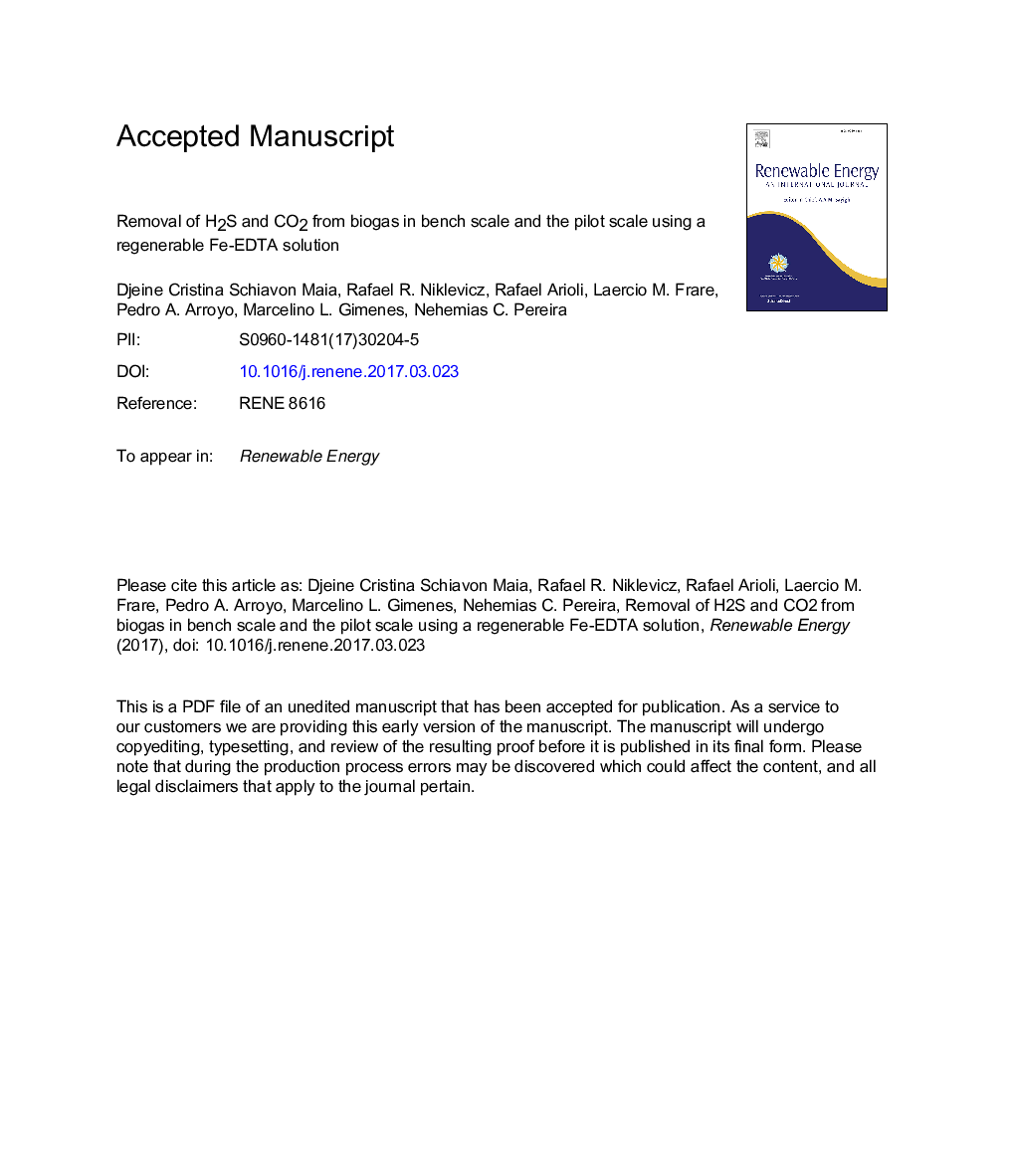| Article ID | Journal | Published Year | Pages | File Type |
|---|---|---|---|---|
| 4926644 | Renewable Energy | 2017 | 23 Pages |
Abstract
Although the hydrogen sulfide is present in small quantities in biogas, it's a highly toxic and corrosive gas. Through the process of absorption with Fe-EDTA solution, H2S can be eliminated from gas flows, forming elemental sulfur. Another constituent of biogas is the CO2, it can be considered inert and it reduces energy efficiency. In this sense, this work presents a stage in bench scale with synthetic biogas and the pilot scale, of H2S from biogas purification provided of the residual biomass treatment. Both the systems utilize H2S removal method with Fe-EDTA solution produced from commercial inputs, while the CO2 is also physically absorbed in this solution. Experiments were carried out in order to find a great ratio L/G, Fe-EDTA liquid flow by gas flow, due to different Fe-EDTA concentrations. According to CCRD methodology, both bench scale and pilot scale, higher H2S removal efficiencies are obtained for high values of L/G and Fe-EDTA concentration. In bench scale using Fe-EDTA 0.2 mol Lâ1 and L/G 1.27, H2S removal efficiency was 99% after 35 min. On a pilot scale it was possible to obtain maximum H2S removal of 98% with CO2 removal 18%, thus, there was an increase of 17% in biogas calorific power.
Related Topics
Physical Sciences and Engineering
Energy
Renewable Energy, Sustainability and the Environment
Authors
Djeine Cristina Schiavon Maia, Rafael R. Niklevicz, Rafael Arioli, Laercio M. Frare, Pedro A. Arroyo, Marcelino L. Gimenes, Nehemias C. Pereira,
